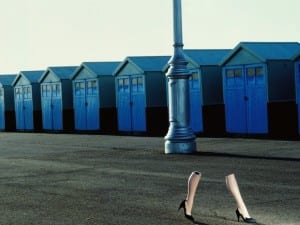The James Barnor archive is the product of a career spanning more than 60 years. Barnor was born in Accra, Ghana in 1929. He began his photographic career when he opened a makeshift studio in Jamestown. Starting in the early 1950s, he operated from the Ever Young studio in Accra. He worked as a photographer for the Daily Graphic newspaper, and Drum, the foremost lifestyle and politics magazine in Africa. In 1959, he left Ghana for the UK and commenced photography studies at Medway College of Art in Kent. His exhibition, Ever Young, is currently on display at Impressions Gallery, Bradford.
His move to the UK in 1959, shortly after Ghana gained independence from colonial rule, is of broad significance to this exhibition. Ghana was the first sub-Saharan country to gain independence. The medium employed throughout is portraiture. Around half of the work captures individuals and groups of individuals in Ghana during the advent of independence. The other half of the work was taken in the UK during the 1960s.
In employing the medium of portraiture, this exhibition achieves a highlighting of parallels between two societies in transition. One of the continuities, of course, is that people are central to this comparison. Another continuity that bursts out from the images is an infectious, though now nostalgic, optimism and confidence. Where Ghana moves towards independence and self-determination, Barnor’s adopted home of London becomes a more cosmopolitan and multicultural city.
The portraits captured by Barnor during the 1950s at the Ever Young (Accra) studio feature a variety of people from different walks of life: dignitaries, civil servants, performers, newly weds. A comparative strength of these portraits lies in the physical context of the subjects. Where images taken of indigenous African people by colonial photographers tended to stress a false sense of the exotic and hence otherness in the physical context, Barnor presents an accurate backdrop, often within a domestic setting. Members of an aspirational working class brim with the optimism and confidence that the viewer is encouraged to associate with the advent of independence. In the portrait, Salina Opay, Policewoman # 10 (Ever Young Studio, Accra, 1954) a uniformed, young woman stands saluting. She smiles with an energetic confidence that speaks of a desire to contribute to the public good within the context of forthcoming independence and self-determination. Similar energy and positive general attitude is captured in 15, square, black and white, formal portraits taken at the Ever Young studio in the 1950s. A group of nurses stand together in one image. In another is a baby. Children in fancy dress sit for the camera. Smartly and immaculately dressed couples and individuals sit and stand. This group of 15 images is also striking because of its regular, geometric layout.
The portraits captured in 1960’s London speak of the city becoming increasingly cosmopolitan. Barnor presents the viewer with this facet of the metropolis in the 1960s, along with the accompanying personal and individual liberation. The latter comes through particularly well in the fashion worn. One of the first images with which the viewer is presented is Untitled # 1 (London, 1967). A female model stands boldly and without passivity. She wears a pink dress, cut with 1960’s innovation, and boots to the knee. A number of images feature female models from the covers of the magazine, Drum. The image Drum cover girl Erlin Ibreck (London, 1966) is particularly striking. The model, who wears a distinctively 1960’s cut dress, leans against a parked car with confident nonchalance. The composition of this photograph is remarkable as the street on which the car is parked tapers into the distance and out of focus. The BBC World Service broadcaster Mike Egham features in a couple of images. He is seen in black and white in Mike Egham at Piccadilly Circus (London, 1967) arms akimbo in front of a broad sweep of the famous collection of advertising signs. Arresting is Muhammed Ali training at Earls Court (London, 1966). The power and movement of the athlete is frozen with dynamism as two young women watch him with admiration.
James Barnor: Ever Young, until 31 August, Impressions Gallery, Centenary Square, Bradford BD1 1SD.
Daniel Potts
Credits
Images courtesy Autograph ABP. © James Barnor/Autograph ABP.
1. James Barnor, Mike Eghan at Piccadilly Circus, 1967.
2. James Barnor, Muhammed Ali training at Earls’ Court, London, 1966.





